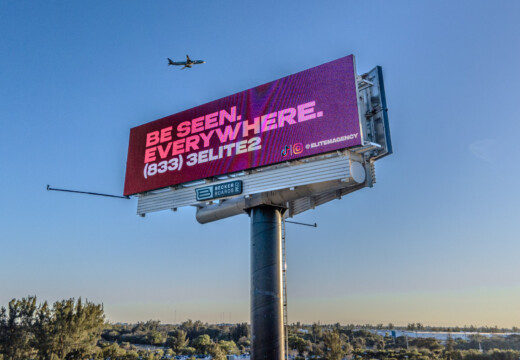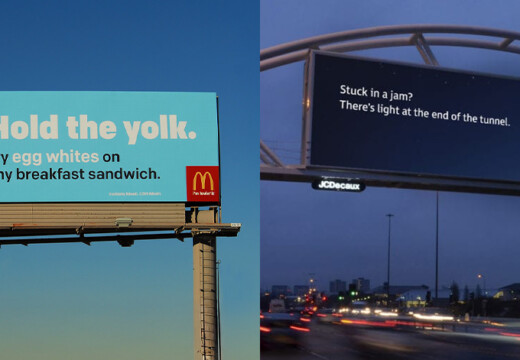Digital billboard brightness standards ensure ads are visible while keeping drivers safe and reducing light pollution. Here’s what you need to know:
- Daytime Brightness: 6,000–8,000 nits for visibility in sunlight.
- Nighttime Brightness: 2,000–2,500 nits to avoid glare.
- Automatic Dimming: Sensors adjust brightness based on ambient light.
- Community Impact: Limits light spill to 0.3 footcandles above ambient levels.
- Regular Testing: Tools like Konica Minolta LS-160 ensure compliance.
These standards balance effective advertising with safety and community comfort.
LightDirect: The Neighborhood-Friendly Digital Billboard
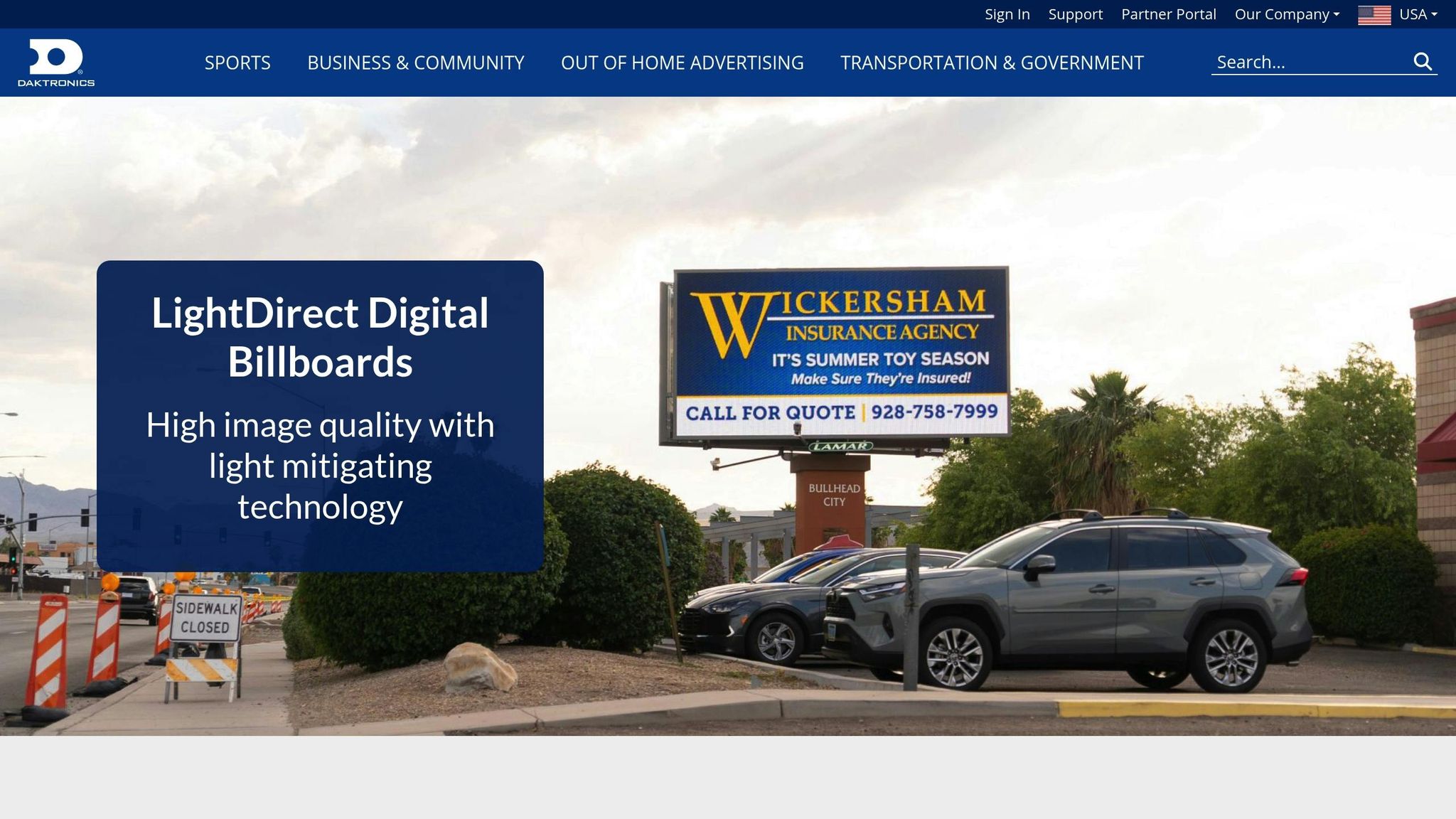
Measuring Billboard Brightness
Billboard brightness is assessed using precise tools and standardized methods, focusing on two key metrics: display output and viewer illumination.
Nits and Footcandles: What They Measure
- Nits (cd/m²): This measures the light emitted directly from the billboard. During the day, billboards typically emit between 6,000 and 8,000 nits, while at night, they reduce output to about 2,500 nits to ensure visibility without compromising safety.
- Footcandles (fc): This measures the light that falls on surrounding areas. According to the OAAA standard, billboards should not exceed 0.3 footcandles above the ambient light levels in their environment.
“Use matte finishes to reduce hotspot glare, schedule high-brightness ads for midday, and test ads at 50% zoom to simulate distant viewer experience”
The distance for brightness testing depends on the size of the billboard:
| Billboard Size | Required Testing Distance |
|---|---|
| 11′ × 22′ | 150 feet |
| 14′ × 48′ | 250 feet |
| 20′ × 60′ | 350 feet |
These measurements guide sensor-based adjustments in modern billboard systems.
Light Sensors and Automatic Adjustments
Using these metrics, light sensors continuously monitor ambient conditions to adjust brightness in real time. Digital billboards often rely on advanced sensors, such as photodiodes or CMOS sensors like the ams OSRAM TSL25911, which can detect both visible and infrared light.
These sensors:
- Take ambient light readings every 2 to 5 minutes
- Ensure compliance with brightness standards
- Maintain optimal display performance
For example, in Nashville, implementing an adaptive brightness system reduced resident complaints by 90%. This system automatically adjusted nighttime brightness from 3,800 nits to 2,100 nits while maintaining a refresh rate of 60Hz.
Professionals often use tools like the Konica Minolta LS-160 for ISO-certified brightness readings. Since sensors can experience an annual drift of about 5%, yearly calibration is recommended. The OAAA also advises quarterly testing with NIST-traceable devices.
In Denver’s Larimer Square, billboards undergo monthly checks due to temperature fluctuations ranging from -10°F to 90°F, which can cause sensor readings to vary by up to 12%.
Standard Brightness Levels
Brightness standards are essential for ensuring digital billboards remain clearly visible without becoming a nuisance. These standards help balance visibility with reduced distractions and light pollution by adjusting displays based on surrounding light conditions. Below, we outline key industry guidelines and typical brightness settings for different times of day.
OAAA Brightness Guidelines
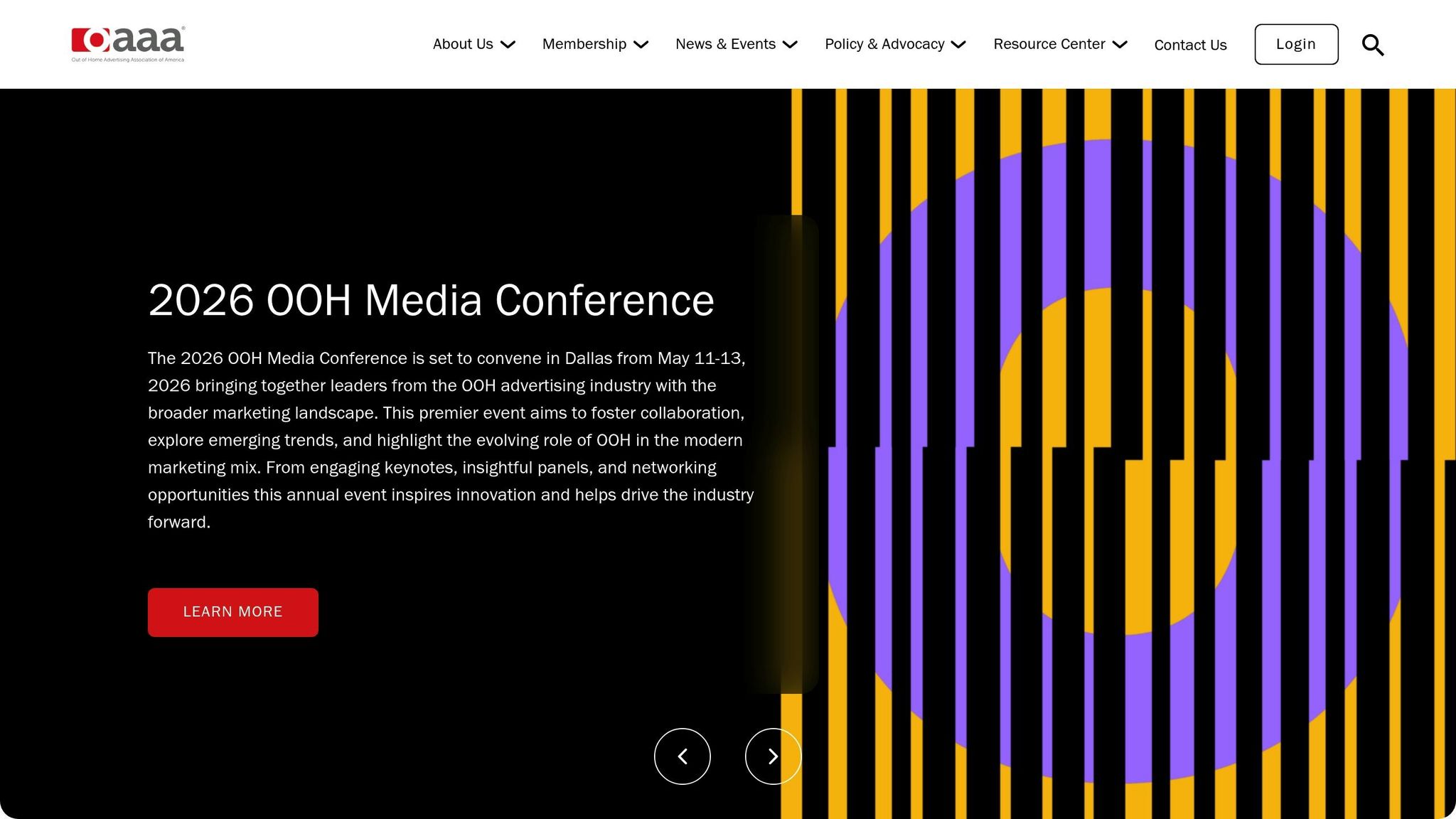
The OAAA (Outdoor Advertising Association of America) has established brightness limits to ensure billboards are effective without causing glare. These limits vary depending on factors like location and display size. By following these guidelines, advertisers can maintain consistent performance while prioritizing public safety and comfort.
Typical Day and Night Settings
Digital billboards often use automated systems to adjust brightness. During the day, brightness levels typically range from 6,000 to 7,500 nits, ensuring visibility under sunlight. At night, brightness is reduced to 2,000 to 2,500 nits to maintain readability without causing glare. These adjustments strike a balance between effective advertising and respecting community safety and comfort.
sbb-itb-2e2e93f
Meeting Brightness Requirements
Ensuring brightness levels meet standards involves using auto-dimming technology and sticking to a regular testing and maintenance schedule.
Auto-Dimming Systems
Digital billboards today rely on ambient light sensors to automatically adjust brightness. This allows the display to seamlessly shift between daytime and nighttime settings.
Testing and Maintenance
Auto-dimming alone isn’t enough – routine checks are necessary to stay compliant. Key maintenance tasks include:
- Regularly calibrating sensors and checking display brightness levels
- Monitoring system diagnostics to catch potential issues early
- Inspecting hardware and control software to ensure everything runs smoothly
Blip‘s Brightness Standards
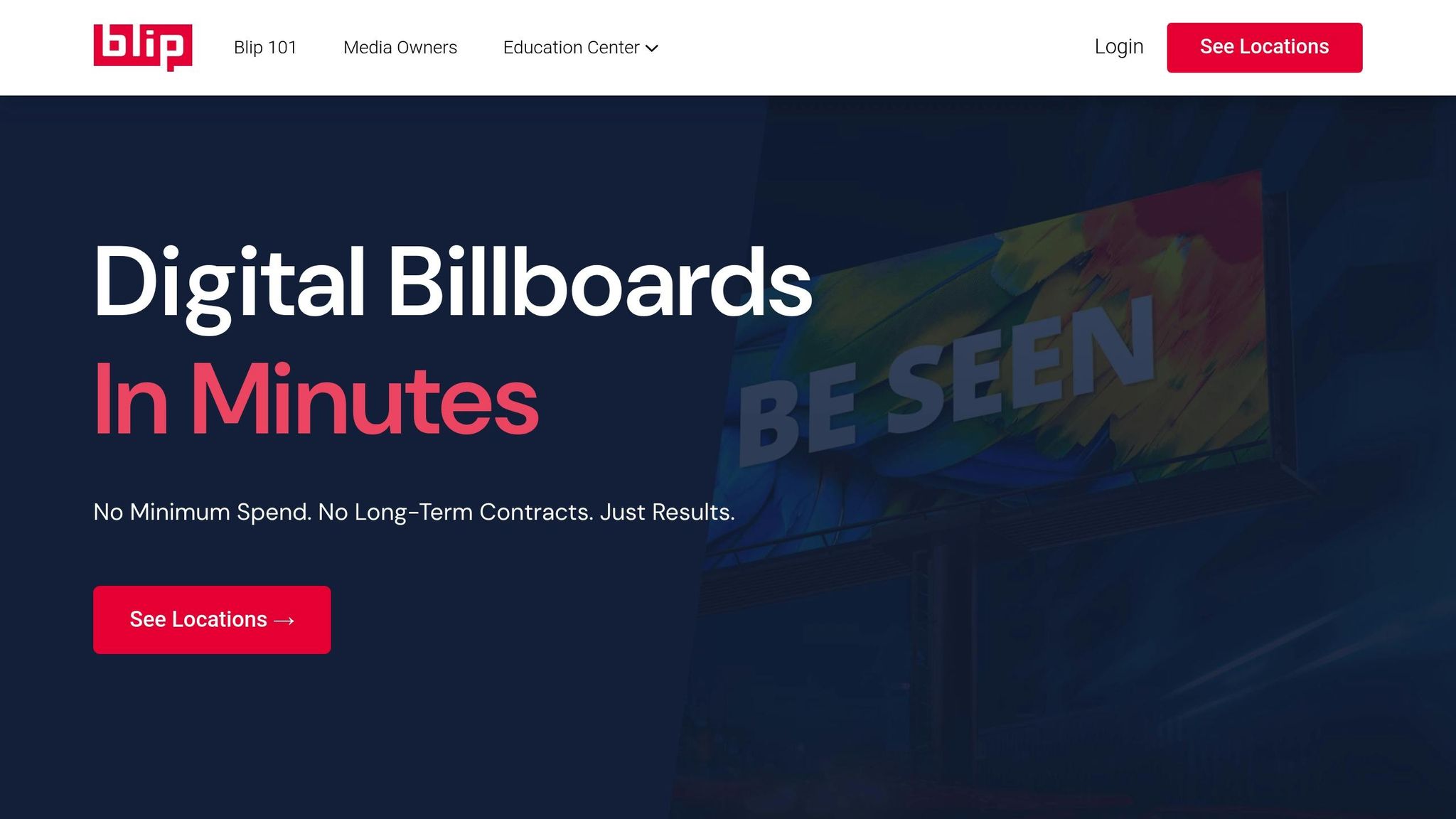
Blip ensures all campaigns meet established billboard brightness regulations. While specific brightness values aren’t shared, Blip maintains quality through its ad design guidelines and a thorough review process. These guidelines are crafted to address both the technical and creative aspects of campaigns, laying a solid foundation for effective ad design strategies.
Ad Design Guidelines
Using Blip’s online platform, advertisers can follow design principles that create clear and engaging visuals, regardless of lighting conditions. Creative assets are adjusted according to best practices to ensure readability during both daytime and nighttime.
Content Review Process
Blip employs a two-step review process to maintain ad quality and ensure brightness compliance. First, ads undergo a technical evaluation. Then, billboard owners verify the content. This streamlined process helps launch ads quickly while meeting visibility and compliance standards.
Summary
Digital billboard brightness standards are essential for effective advertising while prioritizing safety and compliance with regulations. Technical guidelines, sensor adjustments, and content review processes work together to create a reliable framework for outdoor advertising success.
“It’s not a social media thing that you see on your phone. It’s not word-of-mouth. It’s big and bold and out there in public. I would say this is the first step of looking big and public”
Blip’s efficient review process ensures advertisers adhere to industry brightness standards without compromising visual appeal. These factors combine to achieve both compliance and impactful advertising.
Key Standards Impact
| Aspect | Role in Advertising |
|---|---|
| Automated Dimming | Keeps brightness suitable for both day and night |
| Light Sensors | Adjust displays based on ambient light conditions |
| Regular Testing | Ensures consistent performance and adherence to standards |
| Content Design | Affects visibility and overall effectiveness |
FAQs
How do brightness standards for digital billboards help reduce light pollution and improve safety for drivers?
Brightness standards for digital billboards are designed to minimize light pollution while ensuring the displays are visible and safe for drivers. By regulating how bright a billboard can be, especially at night, these standards prevent excessive glare that could distract drivers or obscure their view of the road.
Proper brightness levels also help digital billboards blend into their surroundings without overwhelming the environment, contributing to a safer and more comfortable experience for both drivers and nearby communities. Adhering to these standards ensures compliance with local regulations and promotes responsible advertising practices.
How do light sensors help digital billboards maintain proper brightness levels?
Light sensors play a crucial role in ensuring digital billboards adjust their brightness based on surrounding light conditions. During the day, they help increase brightness so ads remain visible under sunlight, while at night, they reduce brightness to prevent glare and comply with local regulations.
By automatically adapting to ambient light, these sensors not only enhance visibility but also improve energy efficiency and ensure a better experience for drivers and pedestrians. This technology makes it easier for billboard operators to meet legal brightness standards without constant manual adjustments.
Why is it important to regularly test and maintain digital billboards to meet brightness standards?
Regular testing and maintenance are essential to ensure digital billboards comply with brightness standards and local regulations. Overly bright billboards can cause glare, distract drivers, and violate zoning laws, while dim displays may reduce ad visibility and effectiveness.
By routinely checking brightness levels and performing maintenance, you can maintain optimal performance, enhance viewer experience, and avoid potential fines or penalties. This proactive approach also helps extend the lifespan of your billboard and ensures consistent ad quality.
Brightness standards for digital billboards are designed to minimize light pollution while ensuring the displays are visible and safe for drivers. By regulating how bright a billboard can be, especially at night, these standards prevent excessive glare that could distract drivers or obscure their view of the road.
\n
Proper brightness levels also help digital billboards blend into their surroundings without overwhelming the environment, contributing to a safer and more comfortable experience for both drivers and nearby communities. Adhering to these standards ensures compliance with local regulations and promotes responsible advertising practices.
"}},{"@type":"Question","name":"How do light sensors help digital billboards maintain proper brightness levels?","acceptedAnswer":{"@type":"Answer","text":"
Light sensors play a crucial role in ensuring digital billboards adjust their brightness based on surrounding light conditions. During the day, they help increase brightness so ads remain visible under sunlight, while at night, they reduce brightness to prevent glare and comply with local regulations.
\n
By automatically adapting to ambient light, these sensors not only enhance visibility but also improve energy efficiency and ensure a better experience for drivers and pedestrians. This technology makes it easier for billboard operators to meet legal brightness standards without constant manual adjustments.
"}},{"@type":"Question","name":"Why is it important to regularly test and maintain digital billboards to meet brightness standards?","acceptedAnswer":{"@type":"Answer","text":"
Regular testing and maintenance are essential to ensure digital billboards comply with brightness standards and local regulations. Overly bright billboards can cause glare, distract drivers, and violate zoning laws, while dim displays may reduce ad visibility and effectiveness.
\n
By routinely checking brightness levels and performing maintenance, you can maintain optimal performance, enhance viewer experience, and avoid potential fines or penalties. This proactive approach also helps extend the lifespan of your billboard and ensures consistent ad quality.
"}}]}
